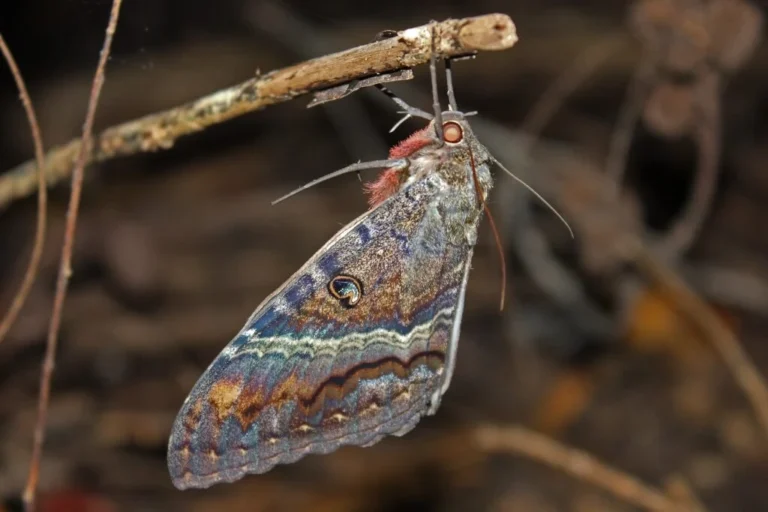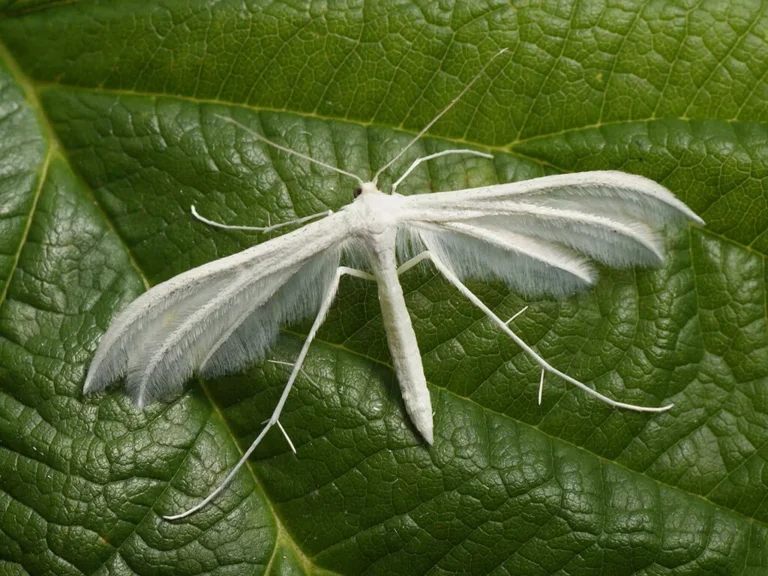Spotting the Intriguing American Dagger Moth: Your Ultimate Guide
Hello, nature enthusiasts!
Today, we venture into the captivating world of one of the most striking caterpillars you might stumble upon in your backyard – the American Dagger Moth, also popularly known as the yellow caterpillar with black spikes.
This fluffy yet potentially hazardous little creature is one to watch out for. Without further ado, let’s delve deeper!
If you’ve ever been on a nature walk in regions like Michigan or Ontario, you might have come across a fascinating caterpillar that looks like it’s wearing a yellow coat adorned with black spikes. This is none other than the young form of the American Dagger Moth.
Knowing more about this creature is not only interesting but also essential to prevent any unwanted skin rashes or stings.
Table of Contents
Description and Identification
Identifying the American Dagger Moth caterpillar correctly is a crucial step in ensuring both your safety and the conservation of the species. Their distinctive appearance, characterized by a yellow body and black spikes, makes them quite noticeable in their natural habitat.
As you delve deeper into the world of entomology, you may find that having a reliable butterflies guide can be an invaluable resource, helping you distinguish between various species effectively and fostering a deeper appreciation for the diversity and complexity of insect life.
Different Names
Commonly known as the American Dagger Moth caterpillar, this creature might sometimes be referred to by other names based on its appearance, such as:
- Yellow hairy caterpillar with black spikes
- Fuzzy yellow caterpillar with black spikes
- Bright yellow caterpillar with black spikes
These names all hint at its distinctive look, making it a remarkable subject for photography or study!
Visual Guide
To help you identify this caterpillar more easily, Here is a visual guide loaded with images showcasing the American Dagger Moth caterpillar in all its glory, alongside potential look-alikes to help you differentiate between them.
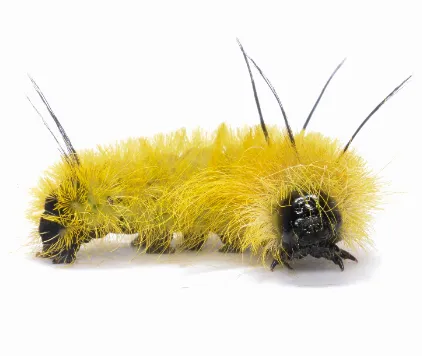
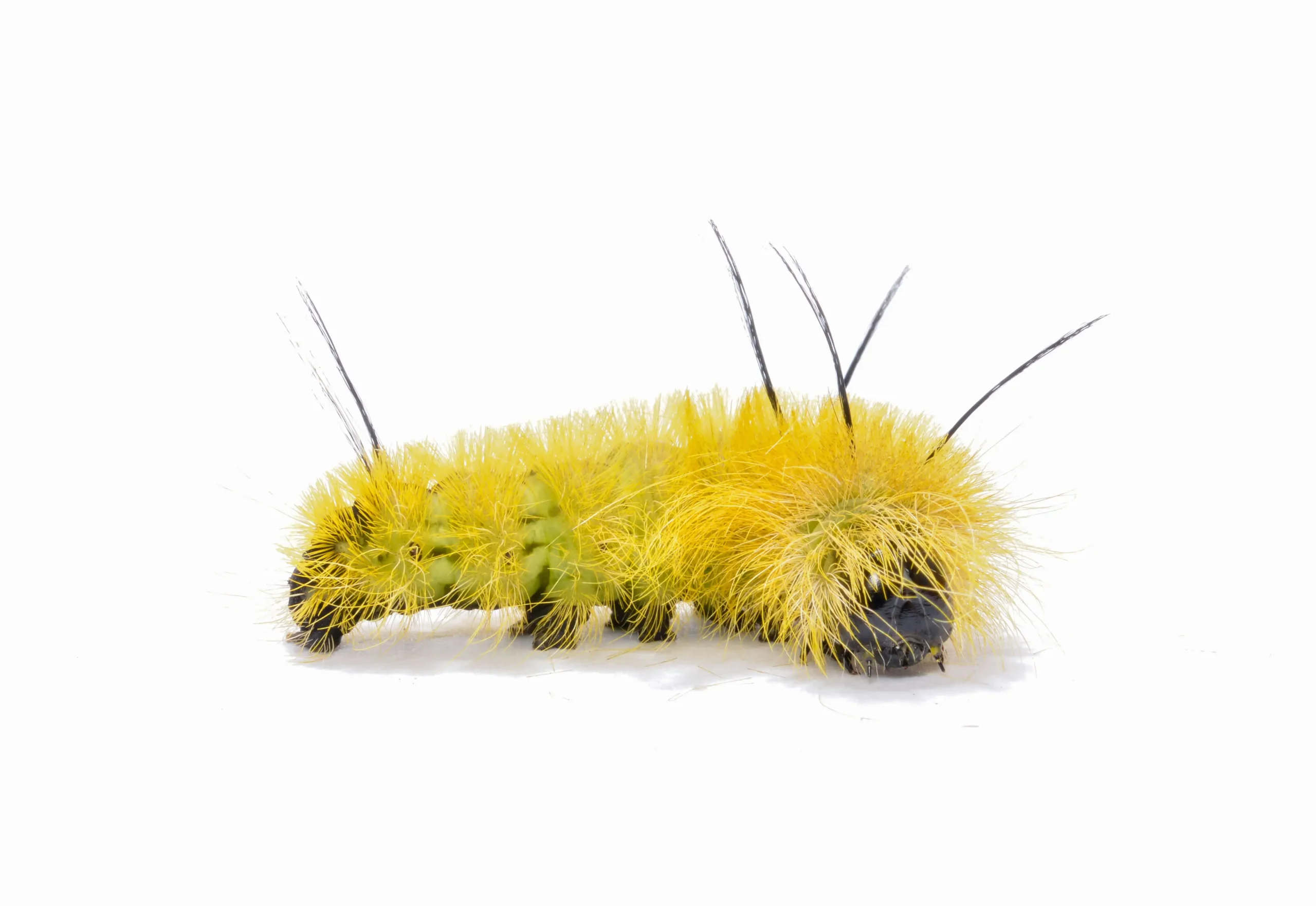
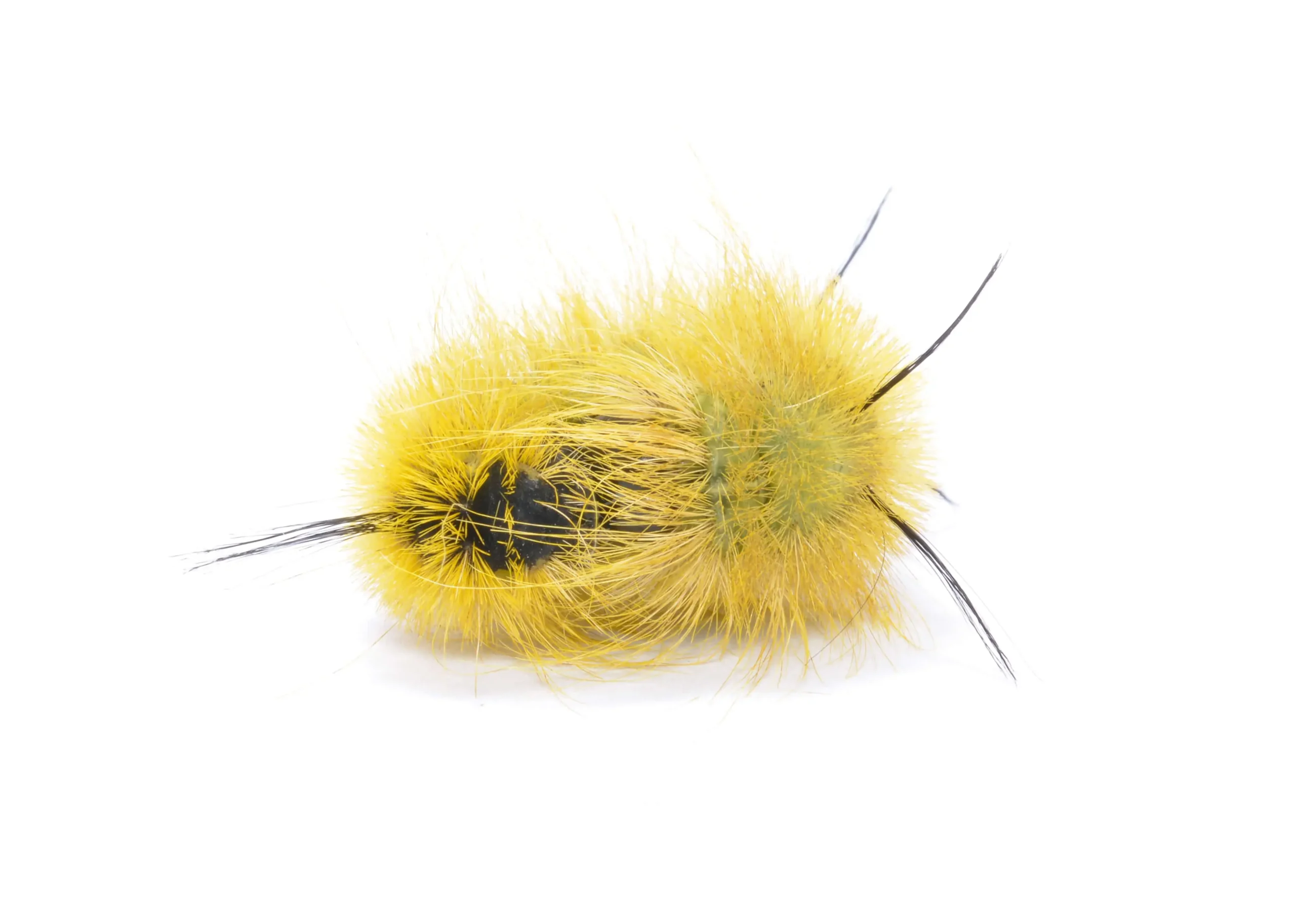
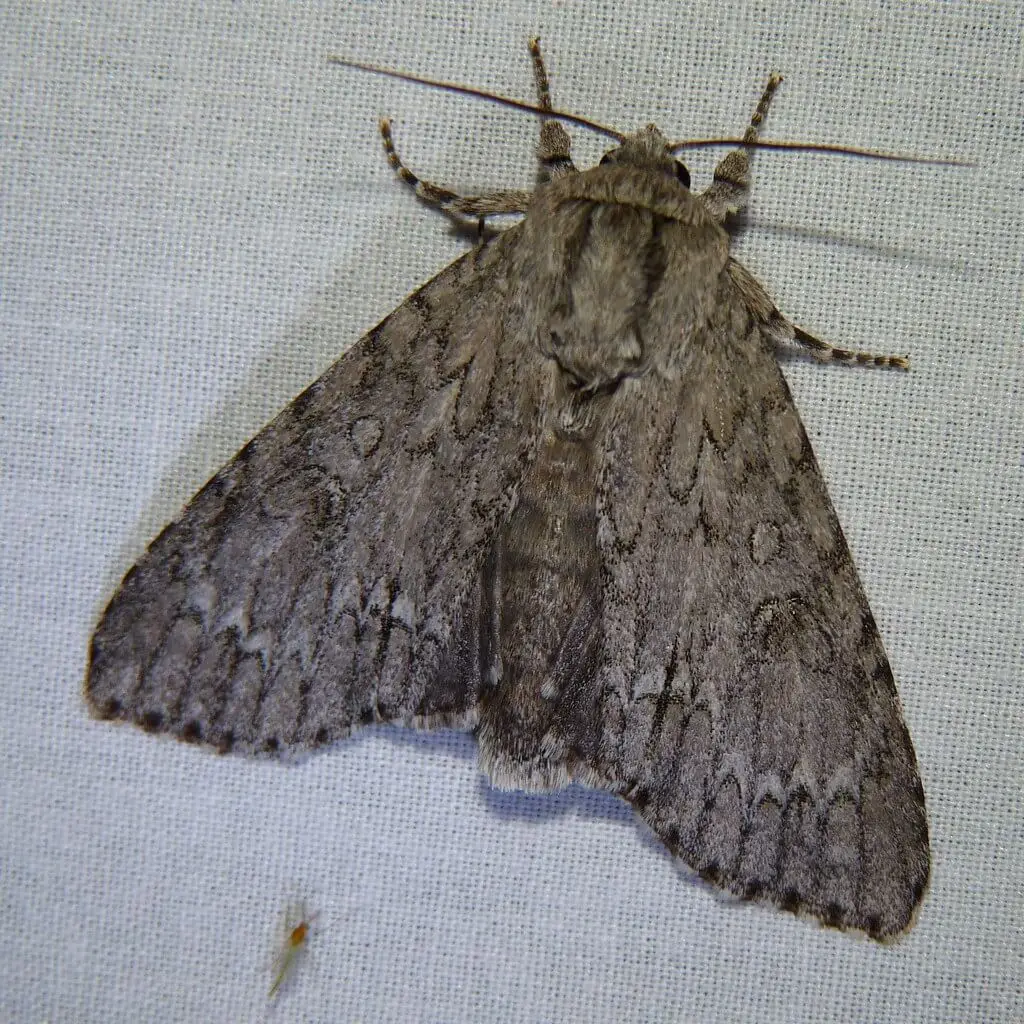

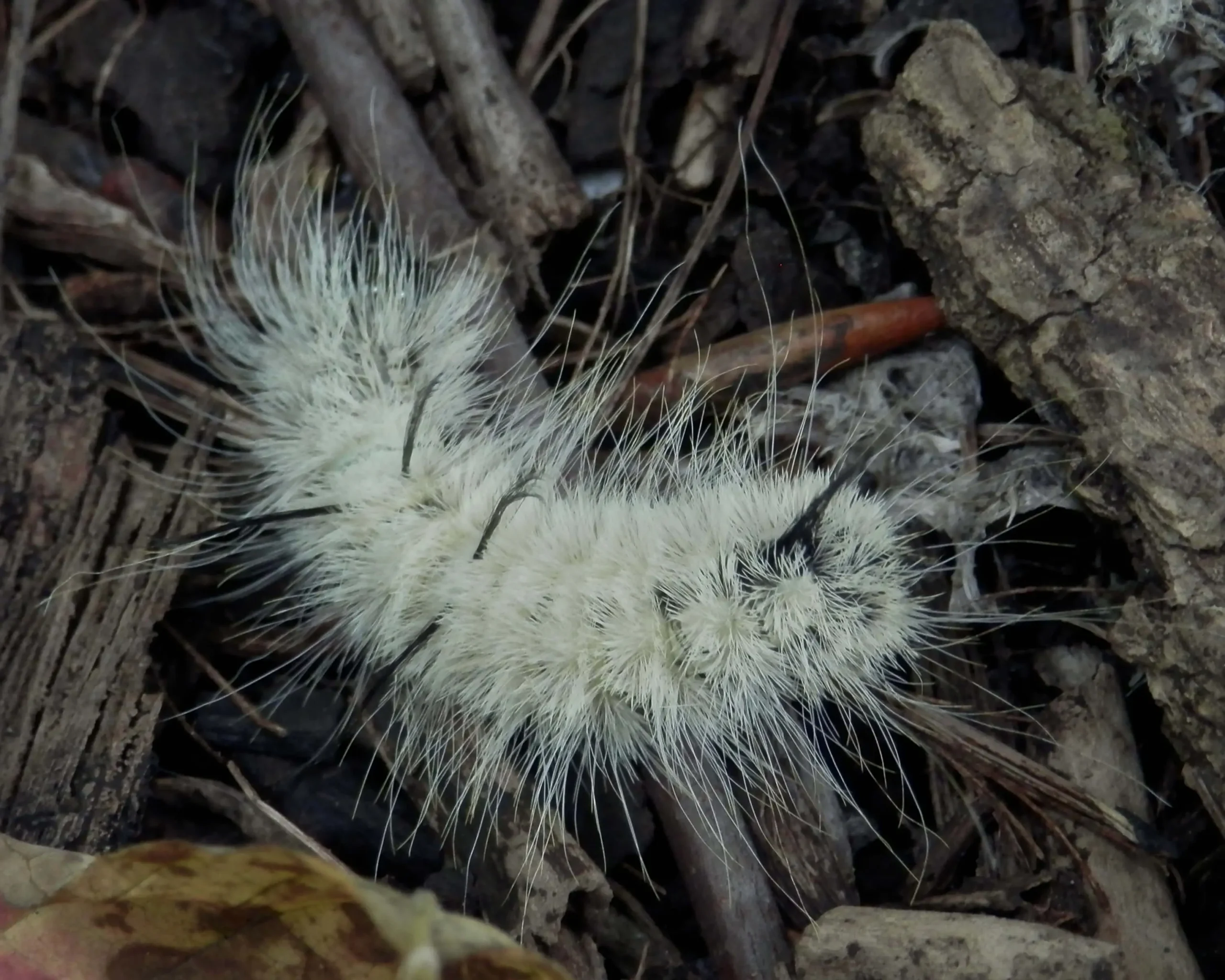
Life Cycle
One of the most fascinating aspects of the American Dagger Moth, a creature also identified as the yellow caterpillar with black spikes in its larval stage, is its intricate life cycle. Let’s go on a detailed journey through each stage of its life, which mirrors a tale of transformation and renewal.
1. Egg Stage
Before the caterpillar graces the world with its bright and fuzzy presence, it starts as a humble egg. The female moth seeks out the perfect spot to lay her eggs, often choosing plants that will later serve as a food source for the hatching caterpillars. This stage is a quiet precursor to the vibrant journey that lies ahead.
2. Larva Stage
The larva stage is where we meet the infamous yellow caterpillar with black spikes. But this stage is much more than just its vibrant appearance:
- Physical Attributes: This stage is marked by a bright yellow body adorned with black spikes, an alluring yet warning sign of the irritation that contact with it can cause. Despite its potentially menacing appearance, this phase is crucial as the caterpillar prepares for its eventual transformation.
- Feeding Habits: These caterpillars are voracious eaters, munching on a wide variety of leaves. As they grow, they shed their skin, entering new instars, or phases of growth. During this period, their diet consists of leaves from various trees like alders, ashes, elms, willows, and oaks. Their eating habits play a pivotal role in shaping the vegetation in their habitat.
3. Pupa Stage
As the caterpillar reaches the end of its larval stage, it goes into a period of transformation within a cocoon. This phase, known as the pupa stage, is a time of metamorphosis, where the caterpillar undergoes significant changes:
- Cocoon Formation: The caterpillar finds a secure spot to form its cocoon, a protective shell within which it will transform.
- Metamorphosis: Inside the cocoon, the caterpillar undergoes a fascinating transformation, restructuring its body to emerge as a mature moth. This process is a beautiful example of nature’s wonders, showcasing the potential for change and growth.
4. Adult Stage
The final stage in the life cycle is the emergence of the adult moth. This period signifies the culmination of its transformative journey:
- Emergence: After a period within the cocoon, the creature emerges as a fully-formed American Dagger Moth, leaving behind its yellow and black caterpillar form. The adult moth displays a different set of physical characteristics, showcasing nature’s ability to renew and transform.
- Reproduction: As adults, their main goal is to find a mate and reproduce, thus ensuring the survival of their species. This stage is marked by a flurry of activity as moths engage in the dance of mating and laying eggs, starting the cycle anew.

Seasonal Behavior
The American Dagger Moth exhibits specific behaviors depending on the season. During the warmer months, you might witness these creatures actively feeding and growing.
As the colder months approach, they seek refuge in their cocoons, preparing for the transformation into moths.
This seasonal behavior is a testament to their adaptability and resilience in the face of changing environmental conditions.
American Dagger Moth caterpillars Poisonous?
Let’s tackle this query by diving deep into the aspects of their defensive mechanisms and the repercussions of coming in contact with them.
Defense Mechanism
These vibrant caterpillars have evolved sophisticated methods to ward off potential predators. Their notable black spikes aren’t just for show; they serve a significant role in their defense strategy.
- Urticating Hairs: The black spikes on the caterpillar’s body are actually specialized hairs called urticating hairs. These hairs contain toxins which can be irritating to the skin. It’s nature’s way of equipping them with a tool to deter predators.
- Chemical Defense: Apart from physical defenses, some studies suggest that these caterpillars might also possess chemical defenses. These defenses are essential in warding off predators that might not be deterred by the physical irritation caused by the hairs.
Effects of a Sting or Contact
Contact with these caterpillars can sometimes result in undesirable effects. Let’s explore the range of symptoms and reactions one might experience:
- Skin Rash: Touching the caterpillar can sometimes cause a rash on the skin. This reaction, characterized by redness and itchiness, is the body’s response to the toxins released by the caterpillar’s hairs.
- Mild Sting: In some instances, individuals might experience a mild sting, a sensation akin to a mild burn. This discomfort is temporary and subsides with time.
- Severity of Symptoms: The severity of symptoms can vary from person to person. While some might experience a mild reaction, others could have a more pronounced response. It’s always recommended to approach these creatures with caution to avoid any unwanted reactions.
What to Do in Case of a Sting or Contact
Encounters with the American Dagger Moth caterpillar need not always end in distress. Here’s a guide on how to address potential contact:
- Immediate Action: In the event of contact, it is advisable to wash the affected area with soap and water to remove any toxins present on the skin’s surface.
- Symptom Management: Applying a cold compress can help alleviate swelling and irritation. Over-the-counter antihistamines can also be used to manage itchiness if necessary.
- Seek Medical Advice: If symptoms persist or worsen, it would be prudent to seek medical advice. Healthcare providers can suggest appropriate treatments to manage any ongoing symptoms.

Sharing Your Experiences
Have you ever encountered an American Dagger Moth caterpillar? We are eager to hear about your experiences. Sharing stories can provide valuable insights and help others navigate their encounters with these captivating yet potentially irritable creatures.
Interaction with Humans
Engaging with the world around us often leads to fascinating encounters with various creatures, including the vivid American Dagger Moth caterpillar.
In this section, let’s uncover more about how humans interact with these remarkable creatures and how to safely enjoy observing them in their natural habitats.
Frequency of Encounters
Given their vibrant appearance, encounters with these caterpillars are not rare, especially during their active months.
Nature enthusiasts, gardeners, or even individuals enjoying a stroll in the park might come across these fluffy caterpillars gracing the leaves of various trees.
- Habitats: These caterpillars predominantly reside in woodlands, gardens, and parks, essentially areas with a rich presence of trees which serve as their food source. Understanding their habitat can give you a hint of where you might encounter them.
- Seasonal Variations: Depending on the season, you might notice a surge in their population. These seasonal variations often correlate with their breeding and feeding cycles, offering opportunities for observing them in different stages of their life cycle.
Precautionary Measures
Coming in contact with the American Dagger Moth caterpillar might sometimes result in mild skin irritations. Here’s how you can prevent any unpleasant experiences:
- Awareness and Education: Being aware of the potential skin irritation that these caterpillars can cause is the first step in ensuring a pleasant experience. Educating children and others about the need to avoid physical contact can prevent unwanted reactions.
- Protective Clothing: If you’re planning to explore areas where these caterpillars are prevalent, wearing protective clothing can be a good precautionary measure. This can help avoid direct contact with the skin.
- Safe Observation: Encouraging safe observation practices, like observing the caterpillars from a distance without touching them, can be a great way to enjoy their beauty without risking irritation.
Community Engagement and Stories
Encounters with nature often create beautiful stories. In this section, we invite you to share your personal stories and experiences with the American Dagger Moth caterpillar.
- Sharing Experiences: Your personal experiences can serve as a rich source of information for others. Whether it’s a delightful observation or a lesson learned, sharing your encounters can contribute to a communal learning experience.
- Community Forums: Join community forums or groups where enthusiasts share their stories and knowledge. Engaging with a community can enhance your understanding and appreciation for these vibrant creatures.
- Photographic Journeys: Document your encounters through photographs. Sharing pictures can be a beautiful way to showcase the beauty of these caterpillars and encourage others to appreciate them from a safe distance.
Ecological Role and Importance
The vibrant and striking American Dagger Moth caterpillar, along with its adult form, plays a critical role in maintaining the delicate balance of our ecosystem. This section aims to shed light on the vital functions these creatures perform and their significance in the environmental hierarchy.
Role in the Food Chain
These caterpillars serve as a vital link in the food chain. They are a source of nutrition for various predators, showcasing the circle of life in action:
- Predators: Many species rely on these caterpillars as a source of nourishment. Predators include birds, small mammals, and even some insects. Their existence is fundamental in sustaining these species, emphasizing their role as a staple in the food chain.
- Natural Population Control: Their predators naturally control the population of these caterpillars, preventing overpopulation and ensuring a balanced ecosystem. This natural control mechanism is vital in maintaining harmony in nature.

Influence on Vegetation
The feeding habits of the American Dagger Moth caterpillar influence the vegetation in their habitat:
- Leaf Consumption: These caterpillars feed voraciously on the leaves of various trees. Their feeding habits can sometimes help control the growth of certain plant species, promoting diversity in vegetation.
- Nutrient Recycling: As they feed on leaves, they contribute to nutrient recycling. The process of consuming leaves and releasing waste products helps in the circulation of essential nutrients in the ecosystem, fostering growth and renewal.
Indicator of Environmental Health
Often, the presence and health of these caterpillars can indicate the overall health of an ecosystem:
- Biodiversity Indicator: A healthy population of these caterpillars can signify a rich and diverse ecosystem. Their presence might indicate the well-being of other species residing in the same habitat.
- Sensitive to Pollution: Caterpillars are known to be sensitive to environmental changes, including pollution. Monitoring their populations can provide insights into the environmental conditions of a region, helping in conservation efforts.
Conservation Efforts
As we realize the importance of these creatures, it becomes essential to engage in conservation efforts:
- Habitat Preservation: Conserving the habitats where these caterpillars thrive is critical. Preservation efforts can help maintain a healthy population and prevent habitat loss.
- Community Engagement: Engaging communities in conservation efforts can foster a sense of responsibility and awareness. Community-driven initiatives can contribute significantly to the protection and preservation of these vibrant creatures.
- Educational Outreach: Educating individuals about the importance of these caterpillars in the ecosystem can be a stepping stone in fostering a community of environmentally conscious citizens. Outreach programs can cultivate a deeper appreciation and respect for these creatures and their role in nature.
Observing & Conservation
As we reach the conclusion of this in-depth exploration of the American Dagger Moth caterpillar, we aspire to instill a profound respect and admiration for these vibrant beings. In this section, we aim to equip you with knowledge and tips on how you can be a conscious observer and an active participant in their conservation.
Observation Tips
Observing these remarkable caterpillars can be a delightful experience. Here are some tips to enhance your observation experience:
- Guided Tours: Consider joining guided tours in parks or nature reserves where experts can help you spot and learn more about these fascinating creatures without causing any harm to them or yourself.
- Identification Guides: Utilize identification guides or apps that help you recognize different caterpillar species, including the American Dagger Moth caterpillar. Learning to identify them accurately can enrich your observation experience.
- Photography: Engage in nature photography to capture the beauty of these creatures. Remember, the goal is to photograph them in their natural habitat without disturbing them.

Conservation
Conservation is a multi-faceted endeavor that goes beyond the preservation of a single species. While the American Dagger Moth caterpillar might seem less appealing compared to a delicate yellow butterfly fluttering in your garden, its presence in the ecosystem is crucial.
As we strive to protect the vibrant biodiversity of our planet, each small effort contributes to a more significant cause. As a conscious citizen, you can play a vital role in the conservation of these caterpillars:
- Creating Habitats: If you have a garden or a backyard, consider creating a friendly habitat for these caterpillars by planting native trees and plants that serve as their food source.
- Community Initiatives: Participate in community initiatives that aim to conserve local habitats and promote the well-being of various species, including these caterpillars.
- Educational Workshops: Organize or attend workshops and seminars to learn more about the conservation of local wildlife. Sharing knowledge can foster a community of well-informed and proactive citizens.
Conclusion
Setting off on this vivid journey through the life and significance of the American Dagger Moth caterpillar, we have traversed various aspects of their existence.
From their vibrant appearance to their ecological role, these creatures have proven to be both captivating and vital to our ecosystem.
As we conclude, we hope that this guide has inspired you to look at these creatures with newfound respect and curiosity. Remember, each one of us can play a role in ensuring the harmonious coexistence of all beings in our environment.
Let us strive to be conscious observers and active protectors of these vibrant caterpillars, fostering a world where they can thrive alongside us.
FAQS About The Yellow Caterpillar With Black Spikes
Is the American Dagger Moth Caterpillar Poisonous?
Yes, They can be poisonous to humans. If you come in contact with its hairs or spikes, it may cause a rash or skin irritation. It is advisable to avoid direct contact with this caterpillar.
What Should I Do if Stung by an American Dagger Moth Caterpillar?
If you are stung by one, it is recommended to wash the affected area with soap and water to remove any hairs or toxins left on the skin. Applying a cold compress can help reduce swelling. If symptoms worsen, consult a healthcare provider. Read CDC’s Guide For More Info.
What Does the American Dagger Moth Caterpillar Turn Into?
They undergo a metamorphosis to become an American Dagger Moth, which is a nocturnal moth with a wing span of about 50-65 mm.
Where Can I Find the American Dagger Moth Caterpillar?
These caterpillars are commonly found in Eastern North America. They primarily reside in wooded areas, feeding on a variety of trees including willows, oaks, and maples. If you are curious about spotting them, try looking in areas with abundant trees in the mentioned regions.





